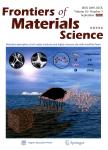Welding simulation of complex structures - possibilities and limits
Welding simulation of complex structures - possibilities and limits作者机构:Institute of Joining and Welding Technical University of Braunschweig Langer Kamp 8 D-38106 Braunschweig Germany
出 版 物:《Frontiers of Materials Science》 (材料学前沿(英文版))
年 卷 期:2011年第5卷第2期
页 面:196-202页
核心收录:
学科分类:080503[工学-材料加工工程] 07[理学] 08[工学] 0805[工学-材料科学与工程(可授工学、理学学位)] 070102[理学-计算数学] 0802[工学-机械工程] 0701[理学-数学] 080201[工学-机械制造及其自动化]
基 金:FOSTA Forschungsvereinigung Stahlanwenwendung e.V
主 题:welding simulation FEM distortion boundary condition clamping
摘 要:The possibilities of predicting welding distortions are extensive. The boundary conditions used in industrial production play an important role in choosing the right strategy. Not only the right abstraction of the welding process is essential for correct and useful resu Its, the clamping conditions and pre-tack welding are also very important. This article reviews experiments and FEM calculations of welded complex structures of industrial relevance. The examined structure comes from a railway vehicle and contains u-profiles with a sheet thickness of 4 mm. The review starts with the explanation of the researched structure and shows different welding situations, like unclamped and clamped manufacturing. Then the FE model with several weld seams is explained and the used boundary conditions are shown. Finally, the measured and calculated distortions are compared and discussed.



